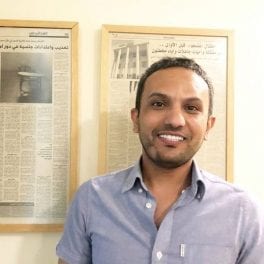On the morning of 15 November 2015 seven young men carried the same weapons energetically and fearlessly; caring for little but to finish the mission that brought them together.
At the time, the French authorities revealed the identities of the attackers, one of whose passport had been found in the Stade de France after the first attack in Paris. He was later revealed to be Ahmad Mohammad Al-Mohammad, a Syrian born on 10 September 1990.
Ahmad had no record of entry into France. His journey that would end there had started when he requested asylum in Greece, after which he moved to Serbia and then sneaked into Austria, before leaving for France.
Before the Paris attack, a certain “Ahmad Al-Mohammad” carried out suspicious money transfers of over $78 million to Lebanon, Jordan and Russia. This report reveals new information on how an investigation into Al-Mohammad’s financial dealings was conducted.
According to the reports submitted to the Financial Crimes Enforcement Network (FinCEN) by the banks that reported those transactions, Ahmed Al-Mohammad sent out around 1,938 money transfers between January 2010 and February 2014 and less than a year before the Paris attack.
‘Israel is your home’: Netanyahu’s exploitation of the Paris attacks
After the terror attack took place, the attempt to trace the financial transactions of the Stade de France attacker started. On 18 November 2015, the Bank of New York Mellon started the paperwork to trace the accounts and transactions of those matching the names and passports of the attackers.
Documents obtained by BuzzFeed News and shared with ICIJ, ARIJ and other media partners reveal how the process was carried out, and how several “Al-Mohammads” with bank accounts in Lebanon, Russia and Jordan, became the subjects of Suspicious Activity Reports (SARs).
![The lettering on a commemorative plaque reads 'To the memory of Manuel Dias and in respect of the numerous injured and victims of terrorism at this site on the evening of November 13, 2015' after the unveiling outside the Stade de France stadium, in Saint-Denis, north of Paris, on 13 November 2016, following a ceremony to mark the first anniversary of the Paris terror attacks. [PHILIPPE WOJAZER/AFP via Getty Images]](https://i0.wp.com/www.middleeastmonitor.com/wp-content/uploads/2020/09/GettyImages-622950708.jpg?resize=1200%2C763&ssl=1)
The lettering on a commemorative plaque reads ‘To the memory of Manuel Dias and in respect of the numerous injured and victims of terrorism at this site on the evening of November 13, 2015’ after the unveiling outside the Stade de France stadium, in Saint-Denis, north of Paris, on 13 November 2016, following a ceremony to mark the first anniversary of the Paris terror attacks. [PHILIPPE WOJAZER/AFP via Getty Images]
The sender
Once bank accounts connected to Ahmad Al-Mohammad came under suspicion, information on bank accounts that carried the same name of Ahmad Al-Mohammad started flooding in to FinCEN.
The accounts in Lebanon, Jordan and Russia were not held by just one person, but in fact belonged to several people whose identities and personal details did not align with the purposes for which the transactions were made.
The details of a Lebanese businessman emerged, but was he the same Ahmad Al-Mohammad as the Stade de France attacker?
Byblos Bank was asked to provide detailed information on the holder of a bank account of the same name of Al-Mohammad along with the details of his transaction history.
But this Ahmad Al-Mohammad is Lebanese, not Syrian, and his date of birth is different than that of the suspect’s. He is also a vendor of bicycles and goods imported from China.
It was clear that his transactions were made into the bank accounts of Chinese companies that produce bicycles, and for the value of these bikes, as well as goods that he imports into Lebanon.
READ: Macron and the weak return of French colonialists
Another person who came under suspicion was from Jordan. This Al-Mohammad made money transfers from Jordan to the US and the UK through BLOM Bank in Amman for the purpose of trading cars.
Yet another suspect of the same name carries Russian citizenship. His transactions this time, were sent through Woori Bank in Moscow, and the total of which did not exceed $4,413 and were sent to the People’s Friendship University of Russia.
Another Ahmad, originally from Iraq and living in Jordan has transfers he had made from Byblos Bank in Lebanon stopped. The beneficiary of the transactions was a London-based immigration company.
After reviewing and examining names and details listed in the SARs, it was confirmed that this was yet another case of a popular name used by hundreds of Arabs across the world; there was no connection to the flagged suspect’s name, and so the transactions were eventually allowed to go through.
Names of other people from Jordan also came under suspicion. Their information and bank account details were examined and so were the transactions they made as well as the people and entities on the receiving end. However, as it turned out, none of the suspicious subjects were in fact connected to the suspect.
The views expressed in this article belong to the author and do not necessarily reflect the editorial policy of Middle East Monitor.


![The commemorative plaque unveiled by French President Francois Hollande and Saint-Denis Mayor Didier Paillard is seen outside the Stade de France stadiumon the first anniversary of the 2015 Paris terrorists attacks on November 13, 2016 in Saint Denis, France. [Frederic Stevens/Getty Images]](https://i0.wp.com/www.middleeastmonitor.com/wp-content/uploads/2020/09/GettyImages-623005796.jpg?fit=1200%2C800&ssl=1)









